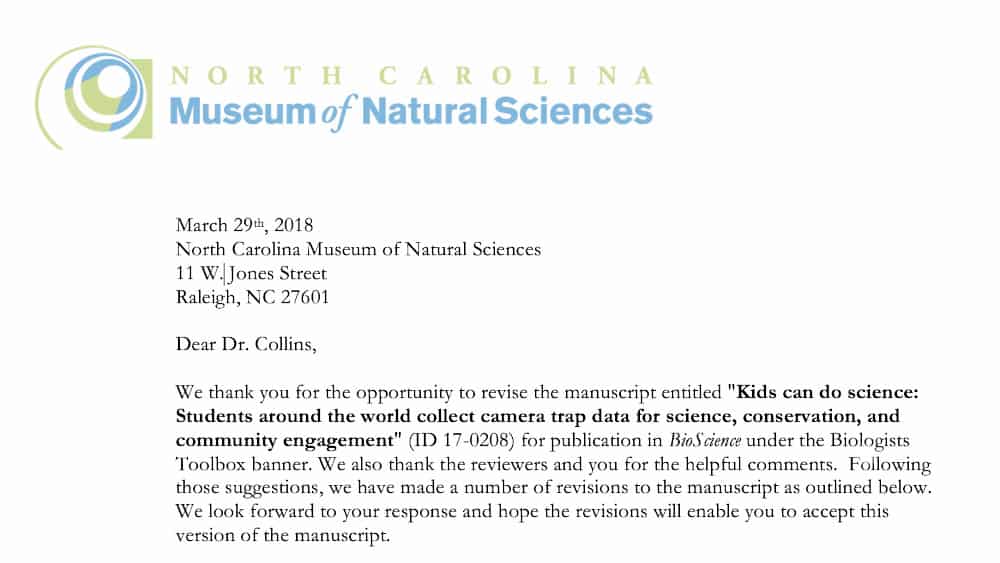Getting reviewers’ comments back from a manuscript submission can be overwhelming. Not only can reviewers be downright mean, but you can get an email back from the editor representing dozens or even over a hundred different comments. What do you do next? Where do you start? In this blog post, I’ll tell you my process.

What is a “Response to Reviewer Comments”?
First, for those of you who are unfamiliar with the process, we’ll go over exactly what this is. In the peer review process, you submit your manuscript to a journal. The editor either rejects it outright or they send it to experts in that field to review if they think the study may be one the journal may be interested in publishing. These experts then agree (or not) to critically review the manuscript. They will provide comments (sometimes lots of them). They will then submit their suggested changes to the editor, who will send all of the information back to you.
The editor will aggregate the comments into one email and they will decide if your manuscript is worthy of publication without hardly any changes (very rare), with minor changes (rare), with major revisions or an invitation to resubmit (common), or an outright rejection (common too).
When you get your email back, if the editor has presented you with the opportunity to revise the manuscript, you then need to write a response to reviewer comments.
Writing Your Response to Reviewer Comments
When you write your response to reviewer comments, you then have the option to make the changes that the reviewers recommend or not. If you do not agree with the reviewer you have to explain and defend your reasoning. Either way, you need to go through every single one of the comments and explain what you decided. Usually you have three reviewers, and if each provides about 20 comments, then that is at least 60 things you have to address. I’ve had close to a hundred before!
How do you start such a daunting process? Here are my tips:
1. First copy and paste the entire email the editor sends back to you with all of the comments. You will have a word document at least several pages long.
2. Format your document as a letter back to the editor (with a full heading and on letterhead) and create an introductory paragraph. It should read something like this:
“We thank you for the opportunity to revise the manuscript entitled ” (Manuscript title)” (manuscript journal) for publication in (Journal name). We also thank the reviewers and you for the helpful comments. Following those suggestions, we have made a number of revisions to the manuscript as outlined below. We look forward to your response and hope the revisions will enable you to accept this version of the manuscript.”

3. Go through all of the text and for each section that there is a suggestion on something you should revise or address, number it and give it its own line. You can delete anything else that summarizes your study or is something you don’t need to address (e.g. if they complement it). You should then have a continuous list of comments. Even if different reviewers repeat the same comment, I still include them separately (see#8). I add headers before the editor’s section and each reviewers’ section of comments.
4. Start with the small stuff first. Because the reviewers will give you changes by their line number, if you make massive changes when you start, you may find it difficult to reference back to where the reviewer is alluding to. Plus you will feel good having made some progress. However, do be careful and revisit these comments when you are finished. It’s possible you made massive changes and may have removed some sentences or words completely.

5. For each comment you address, explain how you addressed it and make it obvious it is a response. For example, I put my responses in italics under the reviewer’s comments. Here is an example from a past paper:

6. Be polite with your responses. Thank the reviewer for pointing out mistakes. If you disagree with the reviewer, still be polite when explaining yourself no matter how rude the reviewer was to you. I’ve seen authors respond harshly and it just looks unprofessional. Another example:

7. Don’t be afraid to disagree! You don’t have to do everything the reviewer suggests. If you have a good reason for doing what you did, then it’s okay to stick to your guns as long as you can back it up and are nice about it.
8. If you get a repeat comment from different reviewers, you can simply refer to your response from before. This is partly why you number your comments. Again, be polite:

9. Once you are finished, close the letter. State that you are looking forward to the editor’s response and then include a digital signature of your name.
That’s it! It’s definitely a lot of work, but organizing and attacking your response to reviewer comments in this way will help with your sanity. What are you tips? Did I leave anything out? Let me know in the comments below.
Love this post? Share it with friends!


